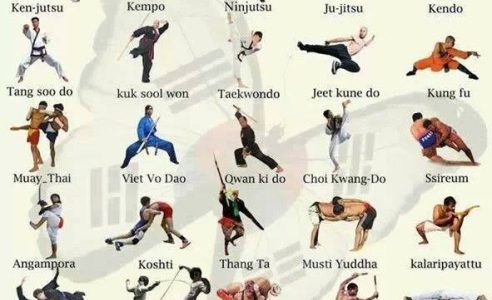The International Trip And Development Of Martial Arts Throughout Background
The International Trip And Development Of Martial Arts Throughout Background
Blog Article
Created By-Sutton TRUE
Martial arts have an interesting history that spans centuries and continents. You could discover it appealing how ancient techniques like Shuai Jiao and Kalaripayattu laid the groundwork for modern battle methods. These self-controls not just stress physical abilities but also reflect the societies that birthed them. As you discover their development, take into consideration how globalization has changed these conventional forms right into crossbreed styles. What impacts do you believe have shaped today's martial arts landscape?
Ancient Martial arts: The Structures of Battle
As you delve into the world of old martial arts, you'll uncover the rich structures that shaped battle strategies across cultures. satori martial arts concentrated on Self-Defense and survival, typically including strikes, grappling, and weapons.
In old China, for example, techniques like Shuai Jiao highlighted tosses and joint locks, while India's Kalaripayattu showcased agility and fluid movement. Japanese samurai developed Kenjutsu, a polished swordsmanship that highlighted self-control and strategy.
free karate classes near me offered not just for fight but also as a means of personal growth, instilling values like regard and determination. judo classes for adults mixing of these strategies over time prepared for the diverse martial arts you see today, each mirroring the special viewpoints and demands of its culture.
The Cultural Influence on Martial Arts Advancement
While martial arts typically mirror the useful demands of a culture, they also embody the cultural values and beliefs of their origins. When you explore various martial arts, you'll observe just how they're influenced by religion, approach, and social norms.
As an example, the emphasis on regard and self-control in Japanese martial arts originates from Zen Buddhism and samurai culture. In contrast, Brazilian Jiu-Jitsu promotes adaptability and approach, formed by the demand for effectiveness in a diverse, multicultural atmosphere.
You may locate that the routines, uniforms, and training methods mirror an area's history and identity. By recognizing these social influences, you strengthen your appreciation of martial arts and their role fit human experiences across the globe.
Modern Adaptations and the Globalization of Martial arts
Martial arts have transformed dramatically in recent decades, adapting to contemporary society and worldwide impacts. You'll observe that conventional kinds have blended with modern strategies, producing hybrid styles like mixed martial arts. These adaptations satisfy varied audiences, making martial arts available and enticing globally.
With the rise of social media and digital platforms, you can discover tutorials and competitors from all edges of the world, breaking geographical obstacles. This globalization has brought about a common appreciation for various disciplines, from Brazilian Jiu-Jitsu to Taekwondo.
As you involve with these arts, you'll understand they're not almost fight; they promote health and fitness, self-control, and psychological well-being.
Eventually, modern-day adaptations have enriched the martial arts landscape, making it a dynamic and developing method.
Verdict
In discovering the background and evolution of martial arts, you uncover a remarkable mix of methods, cultures, and approaches. From old disciplines like Shuai Jiao and Kalaripayattu to the contemporary flexibility seen in MMA, martial arts reflect humankind's pursuit for Self-Defense and personal development. As you engage with these techniques, you not just get abilities yet additionally a deeper appreciation for the varied customs that form our globe today. So, continue your journey and embrace the art of battle!
